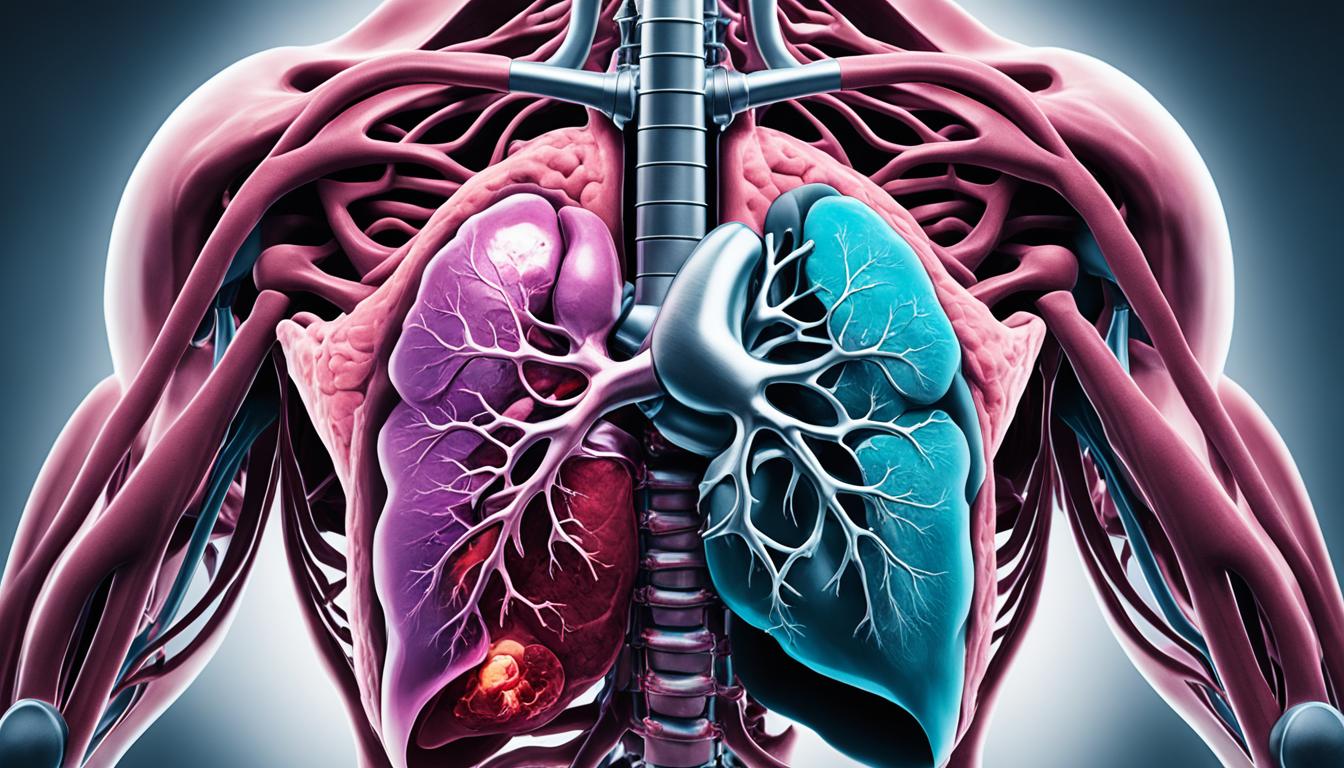Iron overload, or hemochromatosis, happens when the body has too much iron. The excess iron is stored in organs like the liver and can cause serious problems if not treated.
The symptoms of iron overload can be varied. They might cause fatigue, joint pain, and heart problems. Early diagnosis is important for good treatment.
Hereditary hemochromatosis is a common cause. It’s genetic and affects people of Northern European descent more often. Too many iron supplements or many blood transfusions can also be a cause.
Doctors usually check iron levels with blood tests and do genetic tests. Imaging tests may be needed to see if organs are damaged. Finding and treating iron overload early is key to avoiding complications.
Treating iron overload can involve removing iron from the blood. This can be done by taking out some blood, like in blood donation. Medications can also be used to help get rid of extra iron.
Stem cell therapy is a new field for iron overload treatment. It’s showing promise in research. Stem cells may help the body handle iron better, lowering the iron level.
It’s important for people with iron overload to keep their iron levels in check. A diet low in iron is advised. Following your doctor’s advice and treatments can help you live well with this condition.
Key Takeaways:
- Iron overload is the accumulation of excess iron in the body, which can lead to serious health complications.
- Symptoms of iron overload include fatigue, joint pain, abdominal pain, and irregular heart rhythms.
- The primary cause of iron overload is hereditary hemochromatosis, a genetic condition that causes the body to absorb more iron than it needs.
- Other causes of iron overload include excessive iron intake from supplements and multiple blood transfusions.
- Diagnosis involves blood tests, genetic testing, and imaging tests to assess organ damage.
- Treatment options include therapeutic phlebotomy to remove excess iron and chelation therapy to bind and remove iron.
- Stem cell therapy shows promise in improving iron metabolism and reducing iron levels in the body.
- Effective management involves regular monitoring, a low-iron diet, and following treatment recommendations.
Causes and Complications of Iron Overload
The main reason behind iron overload is hereditary hemochromatosis. This is a genetic condition that messes with how the body handles iron. It causes too much iron to build up, leading to iron overload. Too many iron supplements, liver problems, lots of blood transfusions, or certain health issues like thalassemia can also cause it.
Iron overload can hurt many parts of the body. It can cause problems like:
- Liver damage: The extra iron can damage the liver, leading to issues like cirrhosis. This makes the liver not work well and could cause it to fail.
- Heart problems: Too much iron can make the heart’s muscle thick or weak. This might lead to heart failure or make the heart beat irregularly.
- Diabetes: High iron levels might make diabetes worse or help it develop. It can mess with insulin and blood sugar.
- Arthritis: It can also cause joint pain and make them swell. Too much iron in the joints can lead to arthritis.
- Hormonal imbalances: Iron overload can throw off the balance of hormones in the body. This could cause issues like infertility or problems with the thyroid gland.
- Skin discoloration: Sometimes, the skin can turn bronze or grayish. This usually happens in places that get a lot of sun.
Not treating iron overload can cause big problems, including organ failure or death. But, if it’s caught early and managed well, these severe problems can be stopped.
Diagnosis and Treatment of Iron Overload
Iron overload is diagnosed by examining several iron markers in the body. This includes serum ferritin levels and transferrin saturation. Often, blood tests are used. For specific cases, genetic testing might be needed to look for certain mutations. These mutations can cause hereditary hemochromatosis, a major iron overload issue.
Doctors also use imaging tests to see if iron has damaged organs. They might do a liver biopsy or use magnetic resonance imaging (MRI). This helps them understand how severe the problem is. Then they can plan the right care.
The goal of treating iron overload is to lower iron levels and stop organ damage. A common method is therapeutic phlebotomy. It’s like giving blood. This can help by taking out extra iron in the blood. It improves symptoms. If phlebotomy won’t work, or is not enough, chelation therapy might be advised. Chelating agents can remove extra iron. They are taken by mouth or through an IV.
Changing what you eat can also be part of the treatment. Avoiding high-iron foods and skipping iron supplements is important. Keeping a close watch on iron levels is crucial. This helps the doctor know if the treatment is working. A personal treatment plan is key to avoid the bad effects of too much iron. It also helps to stay healthy overall.

